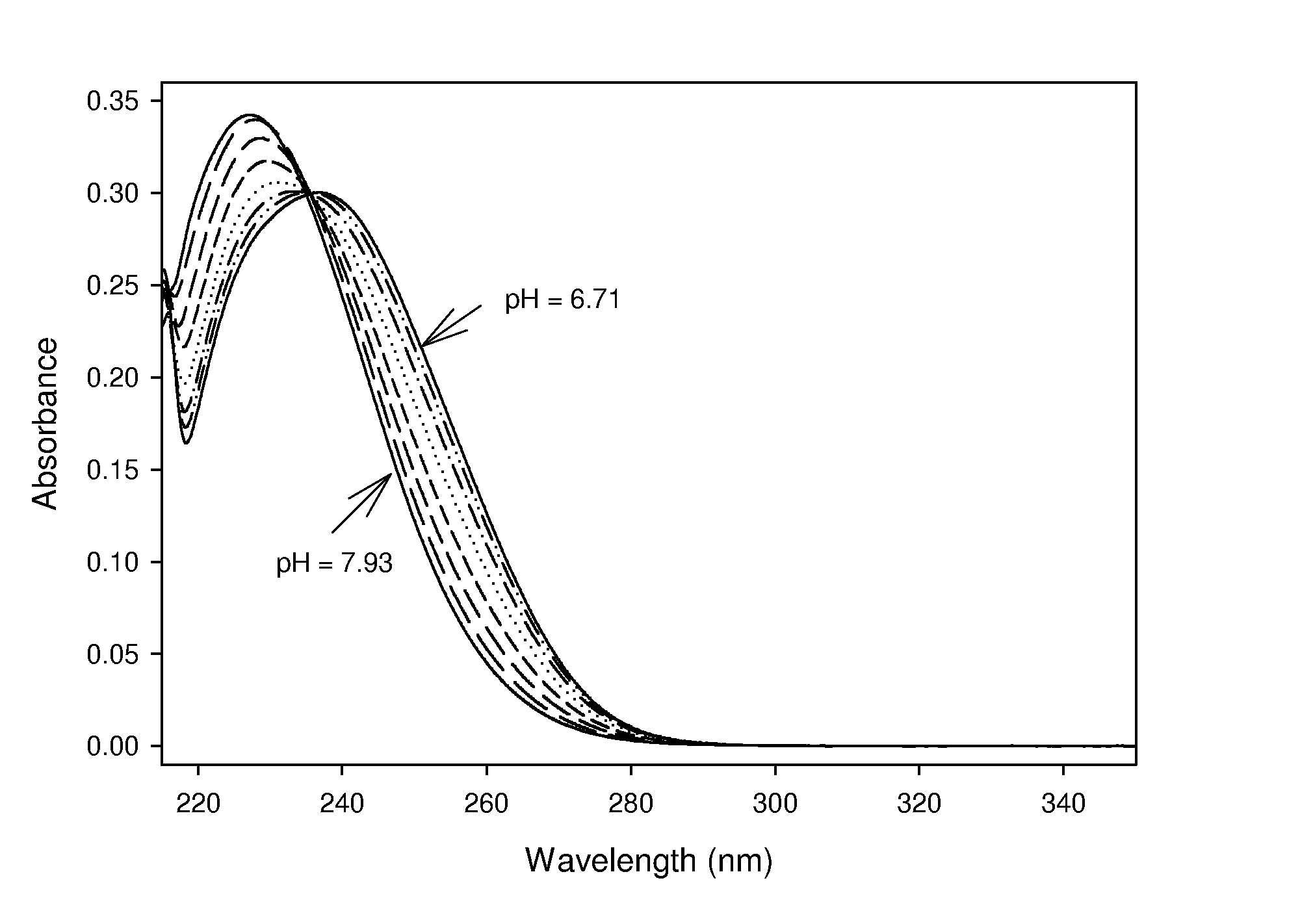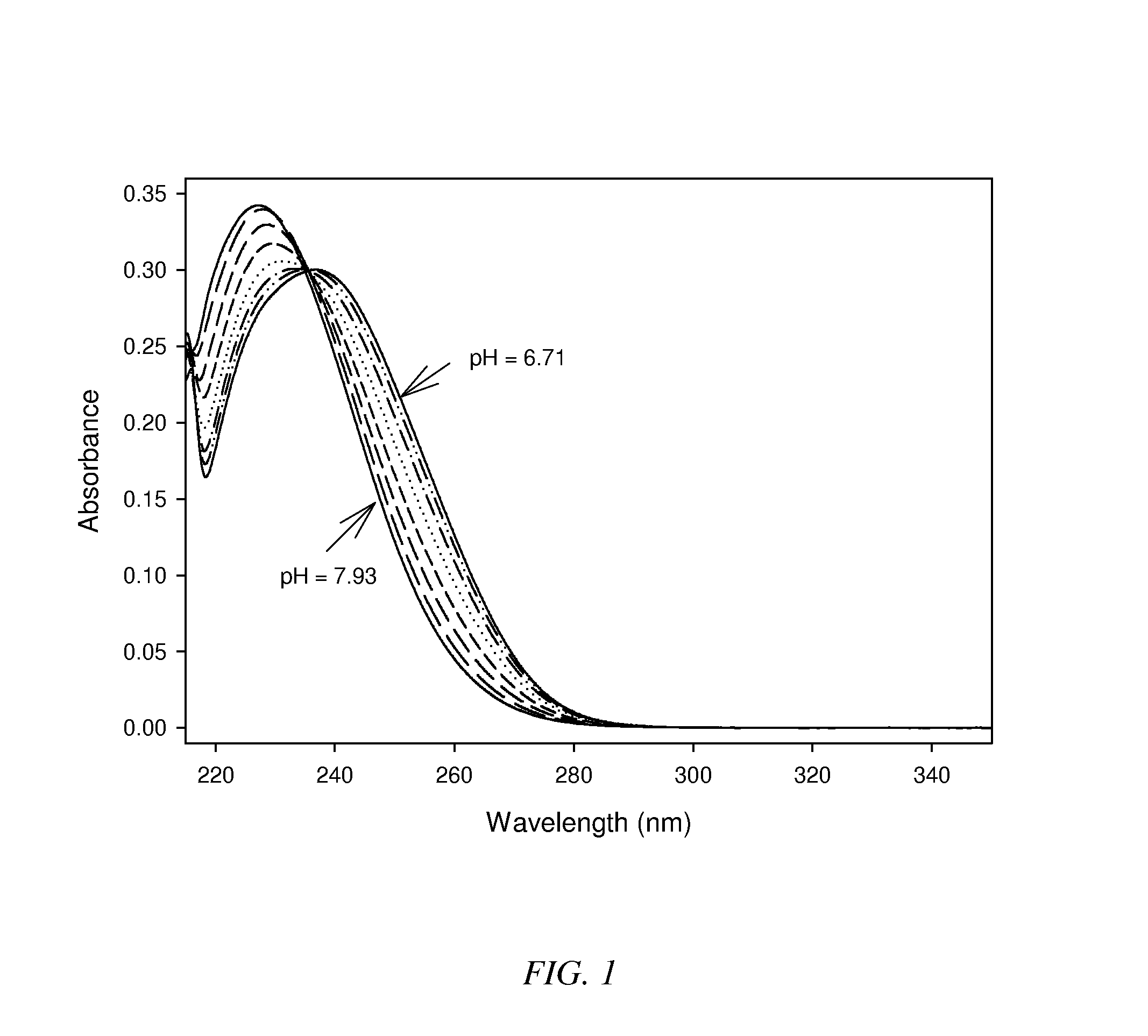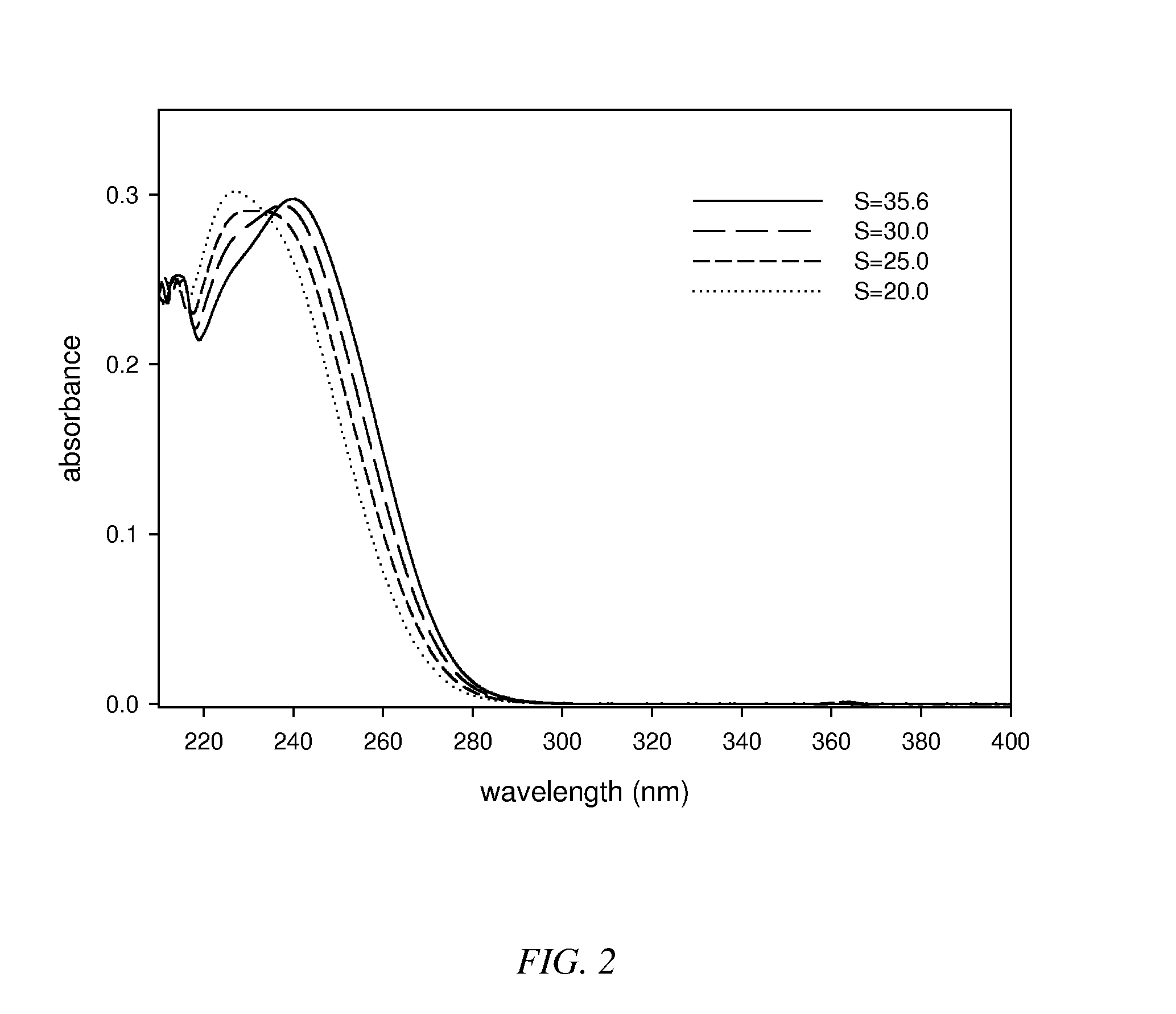Device for in situ calibrated potentiometric pH measurements
a potentiometric and in situ technology, applied in the direction of instruments, material electrochemical variables, analysis using chemical indicators, etc., can solve the problems of inability to calibrate situ buffers, low endurance and measurement frequency of spectrophotometric devices, and rarely used potentiometric devices. achieve the effect of precise and accurate potentiometric ph measurements
- Summary
- Abstract
- Description
- Claims
- Application Information
AI Technical Summary
Benefits of technology
Problems solved by technology
Method used
Image
Examples
Embodiment Construction
b>FIG. 1 is a graph showing Pb(II) UV absorbance spectra in seawater at S=35.87 and 25° C. as a function of pH.
[0023]FIG. 2 is a graph showing Pb(II) UV absorbance spectra of acidified seawater (25° C., pH=3.73) at four selected salinities.
[0024]FIG. 3 is a graph showing salinity dependence of PbCO30 formation constant at 25° C.
[0025]FIG. 4a is a graph showing salinity dependence of 250εpb and 250εPbCO3 at 25° C.
[0026]FIG. 4b is a graph showing salinity dependence of 234εPb and 234εPbCO3 at 25° C.
[0027]FIG. 5 is a graph showing Pb(II) absorbance ratios of in acidified seawater at 250 and 234 nm: 250A / 234A (250εPb / 234εPb) as a function of salinity.
[0028]FIG. 6 is a series of three graphs showing salinity dependence of e1 (6a), e2 (6b), and e3 (6c) at 25° C.
[0029]FIG. 7a is a graph showing the best fit log {(CO3β1) / (e2)} results using Eq. (20).
[0030]FIG. 7b is a graph showing the best fit e1 results using Eq. (20).
[0031]FIG. 8 is a graph showing residuals ([CO32−]observed−[CO32]predic...
PUM
| Property | Measurement | Unit |
|---|---|---|
| frequency | aaaaa | aaaaa |
| frequency | aaaaa | aaaaa |
| frequency | aaaaa | aaaaa |
Abstract
Description
Claims
Application Information
 Login to View More
Login to View More - R&D
- Intellectual Property
- Life Sciences
- Materials
- Tech Scout
- Unparalleled Data Quality
- Higher Quality Content
- 60% Fewer Hallucinations
Browse by: Latest US Patents, China's latest patents, Technical Efficacy Thesaurus, Application Domain, Technology Topic, Popular Technical Reports.
© 2025 PatSnap. All rights reserved.Legal|Privacy policy|Modern Slavery Act Transparency Statement|Sitemap|About US| Contact US: help@patsnap.com



